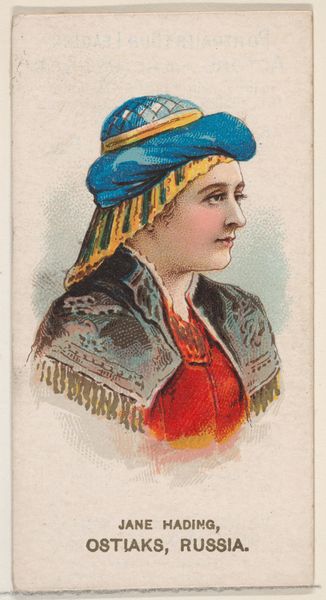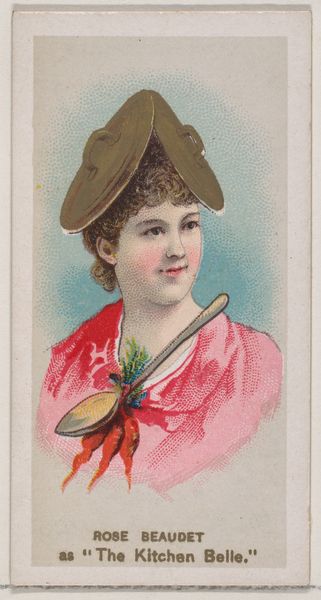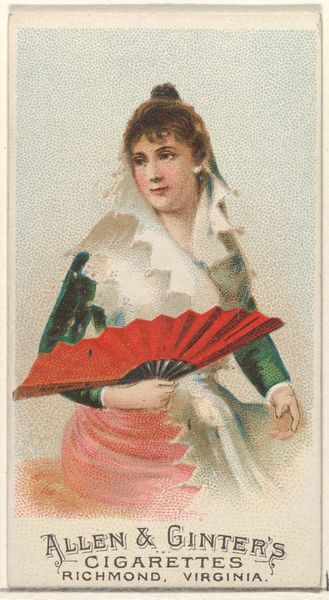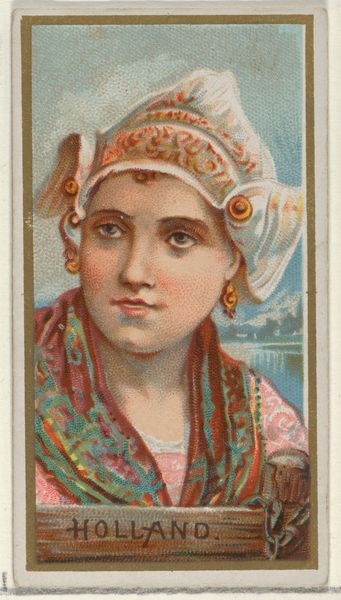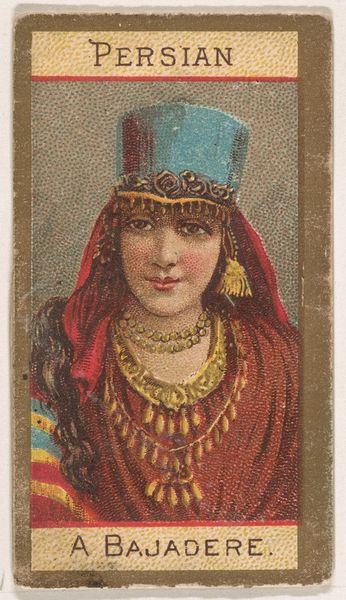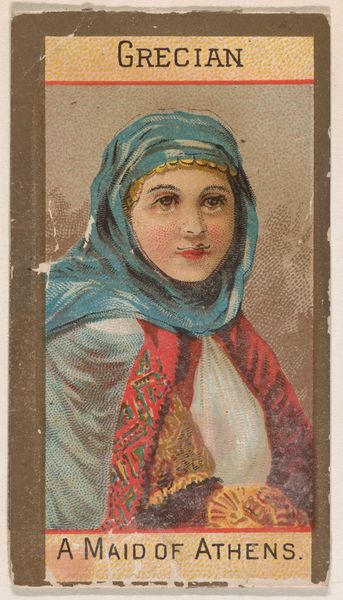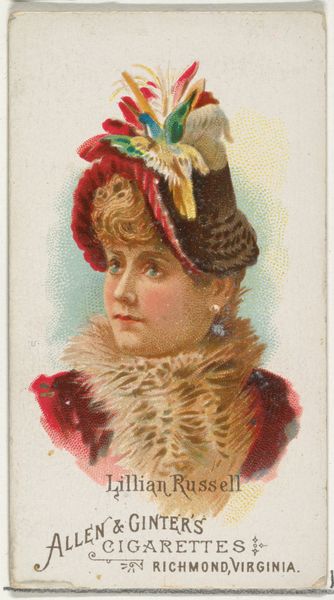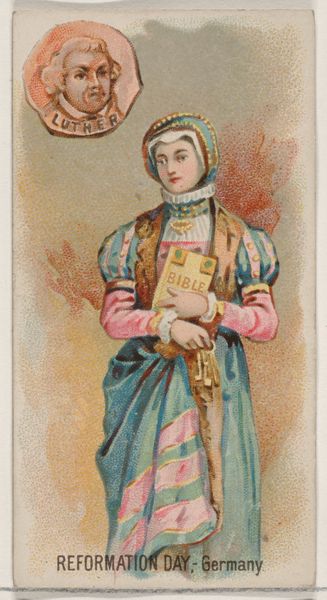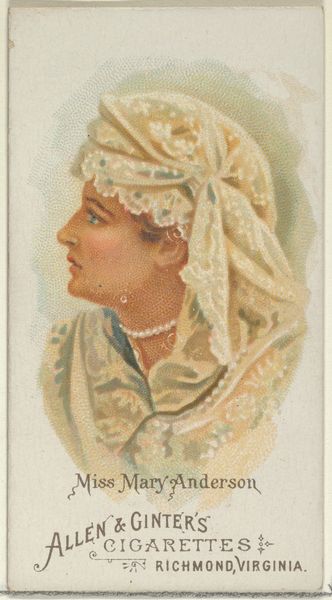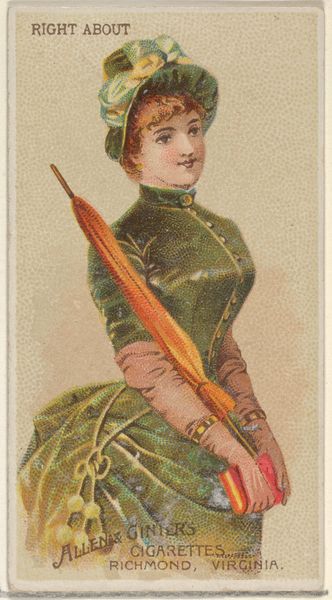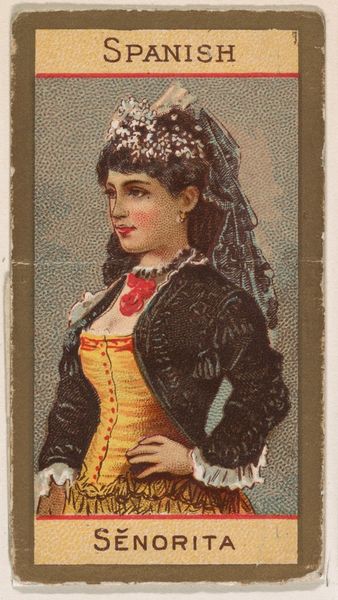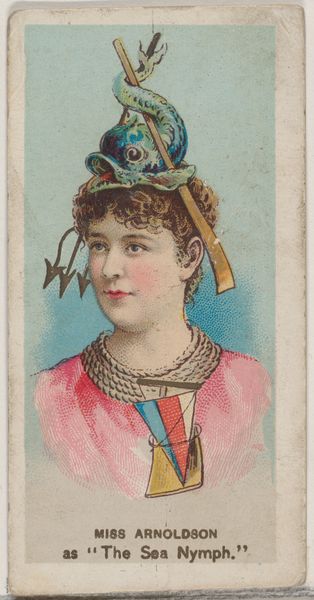
Icelandic, Lady of Reykjavik, from Types of Nationalities (N240) issued by Kinney Bros. 1890
0:00
0:00
Dimensions: Sheet (Folded): 2 11/16 × 1 7/16 in. (6.8 × 3.7 cm) Sheet (Unfolded): 6 7/8 × 1 7/16 in. (17.4 × 3.7 cm)
Copyright: Public Domain
Curator: This is a piece from 1890 entitled “Icelandic, Lady of Reykjavik,” created by the Kinney Brothers Tobacco Company, part of their "Types of Nationalities" series. Editor: It's quite striking, actually. The woman’s vibrant complexion and cool-toned clothing juxtapose in a way that’s…arresting, but what’s she doing? Who is she representing beyond some generic nationality? Curator: Well, these were trade cards, inserted into cigarette packs. They were immensely popular, functioning almost like early baseball cards, boosting sales through collectibility. Editor: Ah, the engine of commerce. So this "Icelandic Lady" becomes a vehicle for selling tobacco? How does the company's production methods align with Icelandic realities and stereotypes? It's another instance of cultural appropriation for capital gain, isn’t it? Curator: One could definitely make that argument. Think about the chromolithography itself. The process required highly skilled laborers creating printing stones—a complex, multi-stage method that was quickly becoming automated at the time. We must also acknowledge Kinney Brothers and the social landscape that made these pieces of ephemera so sought after. Editor: Right, that leap from handmade craftsmanship toward machine reproduction represents a profound shift in the value and dissemination of images. And these images reinforced specific power structures: Western conceptions of other cultures sold back to a Western audience to increase the wealth and power of industries rooted in colonial extraction. It seems she almost embodies Iceland itself, a kind of subjugated object under the imperialist gaze. Curator: I can see how one could get that impression when focusing on the materials themselves and the economic model driving production. Editor: It's about tracing the network. From the minerals used to make the paints to the global shipping routes involved in tobacco sales, it highlights complex material relationships—economic dependencies, unequal distribution, and exploited labor practices. Curator: These types of works highlight these intersections of industry, labor, and consumer culture in a surprisingly compact form. Editor: Exactly! Looking at “Lady of Reykjavik” is like holding a condensed history lesson in capitalist enterprise, art as commodity, and questions about identity in your hands. A product to question as much as to consume.
Comments
No comments
Be the first to comment and join the conversation on the ultimate creative platform.
